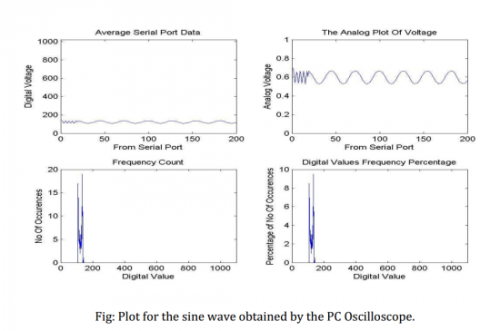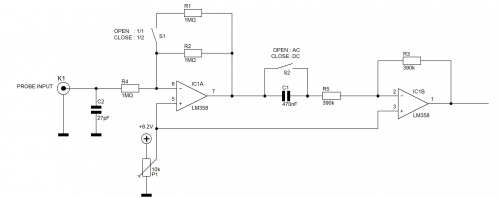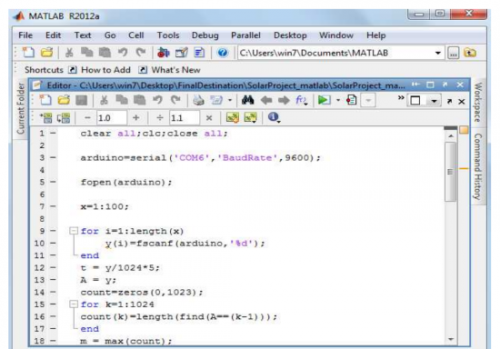- How to Adjust X and Y Axis Scale in Arduino Serial Plotter (No Extra Software Needed)Posted 5 months ago
- Elettronici Entusiasti: Inspiring Makers at Maker Faire Rome 2024Posted 5 months ago
- makeITcircular 2024 content launched – Part of Maker Faire Rome 2024Posted 7 months ago
- Application For Maker Faire Rome 2024: Deadline June 20thPosted 9 months ago
- Building a 3D Digital Clock with ArduinoPosted 1 year ago
- Creating a controller for Minecraft with realistic body movements using ArduinoPosted 1 year ago
- Snowflake with ArduinoPosted 1 year ago
- Holographic Christmas TreePosted 1 year ago
- Segstick: Build Your Own Self-Balancing Vehicle in Just 2 Days with ArduinoPosted 1 year ago
- ZSWatch: An Open-Source Smartwatch Project Based on the Zephyr Operating SystemPosted 1 year ago
A PC and an Arduino: here’s your DIY Oscilloscope
Web site:
http://www.avrfreaks.net/index.php?module=Freaks%20Academy&func=viewItem&item_type=project&item_id=3888Project Summary:
We have designed an Oscilloscope using PC and Arduino Board. The signal is first of all fed to the Arduino Board where the analog signal is converted to a digital signal by the ADC which is then serially outputted to the PC and is read by the MATLAB software via the COM ports. Here the signal is read in the form of digital data but then is converted to analog one by using the resolution of the ADC used by the Arduino Board. The MATLAB software was then used to plot the signals.
Full Project:
The input to be plotted is given to one of the five analog pins in the board. The software used for interfacing the board with the PC is Matlab R2012a. The compiler Arduino 1.0 has been used for uploading the codes to the board. The MAX 232 Line Driver and ATmega328 Processor has been used. The various components used in this designing has been illustrated briefly in the coming sections.
Full project in PDF: DESIGNING A PC OSCILLOSCOPE
Circuit diagram:
Bill of Materials:
Arduino Board
LM358 IC
RESISTORS:
3PCS 1Mohm
CAPACITORS:
2PCS 0.01 µF
Firmware:
MATLAB CODE FOR SERIAL INPUTTING AND PLOTTING OF WAVEFORM
clear all;clc;close all;
arduino=serial('COM6','BaudRate',9600);
fopen(arduino);
x=1:100;
for i=1:length(x)
y(i)=fscanf(arduino,'%d');
end
t = y/1024*5;
A = y;
count=zeros(0,1023);
for k=1:1024
count(k)=length(find(A==(k-1)));
end
m = max(count);
in = find(count==m);
fclose(arduino);
disp('making plot..')
figure('Name','The Digital Values From Serial Port');
subplot(2,2,1)
plot(x,y);
title('Serial Port Data');
ylim([0 1023]);
xlabel('From Serial Port');
ylabel('Digital Voltage');
subplot(2,2,2)
plot(x,t);
title('The Analog Plot Of Voltage');
ylim([0 5]);
xlabel('From Serial Port');
ylabel('Analog Voltage');
fprintf('%d is found toh be maximum count of %d ',in-1,m);
subplot(2,2,3)
t = 0:1023;
plot(t,count),title('Frequency Count');
xlabel('Digital Value');
ylabel('No Of Occurences');
xlim([0 1023]);
subplot(2,2,4)
d = count/length(A)*100;
plot(t,d);
title('Digital Values Frequency Percentage');
xlabel('Digital Value');
ylabel('Percentage of No Of Occurences');
xlim([0 1023]);
Arduino Board codes
void setup() {
// initialize serial communication at 9600 bits per second:
Serial.begin(9600);
}
// the loop routine runs over and over again forever:
void loop() {
// read the input on analog pin 0:
int sensorValue = analogRead(A0);
// print out the value you read:
Serial.println(sensorValue);
delay(100); // delay in between reads for stability
}















Pingback: Merry Christmas and a Open New Year | Open Electronics